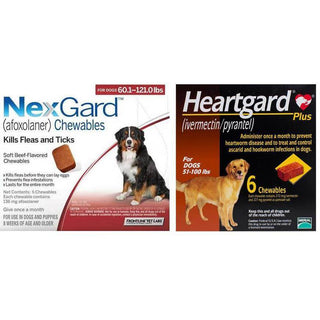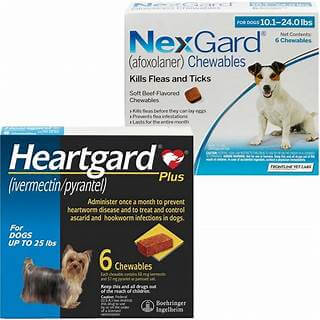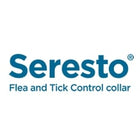
What is Hair Loss in Dogs?
Hair loss, also known as alopecia, is a common issue in dogs and can occur partially or completely. It can affect dogs of any breed or age and may result from several factors, including skin infections, allergies, or hormonal imbalances.
Since the causes of hair loss can vary from mild to severe, early detection is crucial. If you notice unusual shedding or bald patches on your dog, it's important to consult a veterinarian promptly. Timely diagnosis helps identify the underlying issue and ensures your pet receives the proper treatment.
Regular monitoring, proper grooming, and maintaining a healthy diet can help reduce the risk of hair loss in dogs.
Signs of Hair Loss in Dogs
Hair loss in dogs is often easy to spot and can occur at any age, in any breed, and on different parts of the body. The symptoms and patterns of hair loss may vary depending on the underlying cause. Below are common signs to watch out for:
- Overall thinning of fur
- Bald spots around the eyes or mouth
- Patches of complete hair loss
- Symmetrical hair loss on both sides of the body
- Foul or unpleasant odor
- Constant itching and scratching
- Darkened or black skin under the affected areas
- Dry, flaky skin around the bald patches
- Red, inflamed skin around hair-loss areas
- Discharge or bleeding around the affected skin (often due to secondary infections)
If your dog shows any of these symptoms, it's crucial to consult a veterinarian. Early diagnosis can help prevent complications and ensure appropriate treatment.
Causes of Hair Loss in Dogs
Hair loss in dogs can occur due to various underlying reasons. Identifying the cause is essential for effective treatment. Below are some common factors that can lead to hair loss in dogs:
- Pressure sores – Hair loss is caused by prolonged pressure in certain areas.
- Friction – Repeated rubbing, such as from a tight collar or harness.
- Excessive licking or chewing – Often due to stress, anxiety, or irritation.
- Injury or scarring – Hair may not regrow in areas affected by trauma or wounds.
- Post-surgery clipping – Hair loss can result from surgical site preparation.
- Infections – Bacterial, yeast or fungal infections can cause bald patches.
- Ringworm – A common fungal infection leading to circular bald spots.
- Allergies – Reactions to fleas, food, environmental allergens, or contact irritants.
- Mites (Mange) – Parasitic mites that cause intense itching and hair loss.
- Hair shaft disorders – Abnormal growth or structure of the hair strands.
- Thyroid issues – Hypothyroidism can lead to thinning fur and bald patches.
- Cushing's disease – A hormonal disorder that causes hair loss and skin thinning.
- Hormonal imbalances – Sex hormone imbalances can disrupt normal hair growth.
- Chemotherapy – Hair loss may occur as a side effect of cancer treatment.
- Skin cancer – Certain types of cancer can lead to localized hair loss.
- Genetics – Some breeds are prone to hair loss as they age, particularly on the ears, chest, and thighs.
If your dog is experiencing unexplained hair loss, it's important to consult a veterinarian for proper diagnosis and treatment.
Diagnosing Hair Loss in Dogs
If your dog is experiencing unusual hair loss, a veterinary examination is essential to identify the root cause and provide appropriate treatment. Diagnosis involves evaluating various factors, including the pattern of hair loss, skin condition, and whether your dog is itchy or uncomfortable.
Common Diagnostic Methods for Hair Loss in Dogs
Pattern of Hair Loss
-
- Generalized hair loss: This could indicate mange or a bacterial infection.
- Patchy hair loss: Often associated with ringworm, bacterial infections, mites, or mange.
- Hair loss near the rump and tail: Usually linked to flea allergies.
- Hair loss on paws and face: Commonly caused by environmental allergies (atopy).
- Symmetrical hair loss: May point to hormonal imbalances such as thyroid disorders, adrenal gland issues, or sex hormone abnormalities.
Blood Testing
A complete blood profile helps diagnose immune-related conditions, hormonal imbalances, thyroid problems, Cushing's disease, and diabetes.
Skin Biopsy
In cases where skin cancer, tumors, or persistent lesions are suspected, a sample may be sent to a lab for further analysis.
Skin Impression Smears
By pressing a slide on the affected area and examining it under a microscope, veterinarians can detect bacteria, yeast, or inflammation.
Skin Scraping
Gently scraping the skin to collect hair and skin cells helps identify mange mites under a microscope.
UV Light Examination
Some species of ringworm fluoresce under ultraviolet light, appearing as a green-yellow glow.
Allergen Elimination Trials
Feeding a hypoallergenic diet, controlling fleas, or stopping specific shampoos or medications can help identify potential allergens causing hair loss.
Allergy Testing
Blood or skin tests can narrow down possible environmental allergens affecting your pet.
Take Action Early
Hair loss in dogs can have many causes, from mild allergies to severe medical conditions. Early diagnosis and treatment can improve your pet's comfort and prevent further complications.
How to Treat Hair Loss in Dogs
Treatment for hair loss in dogs depends on the underlying cause. Once your veterinarian has made a diagnosis, they may recommend one or more of the following treatments:
Medications for Infections
- Antibiotics (oral or topical) to treat bacterial infections.
- Antifungals (oral or topical) to manage yeast infections and ringworms.
Medications for Skin Conditions and Allergies
- Steroids to reduce inflammation and relieve certain skin conditions.
- Immunosuppressive or anti-cytokine drugs to control environmental allergies (atopy). In many cases, lifelong treatment is necessary.
- Immunotherapy (oral or injectable) to desensitize your dog to specific allergens.
Behavioral and Supportive Treatments
- Behavioral medications for dogs that chew or lick excessively due to anxiety.
- Medicated shampoos or dips for treating mange and other parasitic conditions.
- Hypoallergenic diets to manage food allergies. Your vet may recommend a prescription or over-the-counter hypoallergenic diet and guide you through the transition process.
- Flea prevention with monthly treatments can help reduce hair loss caused by flea allergies.
Hormonal and Nutritional Support
- Thyroid medications and hormone therapy to treat hormonal imbalances or endocrine disorders.
- Nutritional supplements such as Vitamin E, Vitamin A, and fish oil support healthy skin and coat.
Physical Interventions
- Elizabethan collar (E-collar) to prevent your dog from licking or scratching the affected area while it heals.
- Surgery to remove skin cancer, tumors, or other problematic growths. Neutering or spaying may be necessary to treat sex hormone-related conditions.
Chemotherapy and Genetic Conditions
- Hair loss from chemotherapy usually resolves after treatment ends.
- Hair loss due to genetics, scarring, calluses, or pressure sores may be permanent.
When appropriately treated, most hair loss cases in dogs can be resolved. However, if your dog has recurring skin issues, ongoing management may be needed to prevent further hair loss.
The Bottom Line
Hair loss in dogs may require multiple treatment sessions, especially if your pet is prone to recurring skin infections. It is important to follow the veterinarian's prescribed treatment plan carefully. Regular follow-up visits may be needed to track progress and ensure infections heal properly.
Keep a close eye on your dog's skin condition and hair regrowth. If you notice any changes or have concerns, inform your veterinarian immediately so they can adjust the treatment as needed for the best results. Consistent monitoring and timely communication play a crucial role in managing hair loss effectively.






